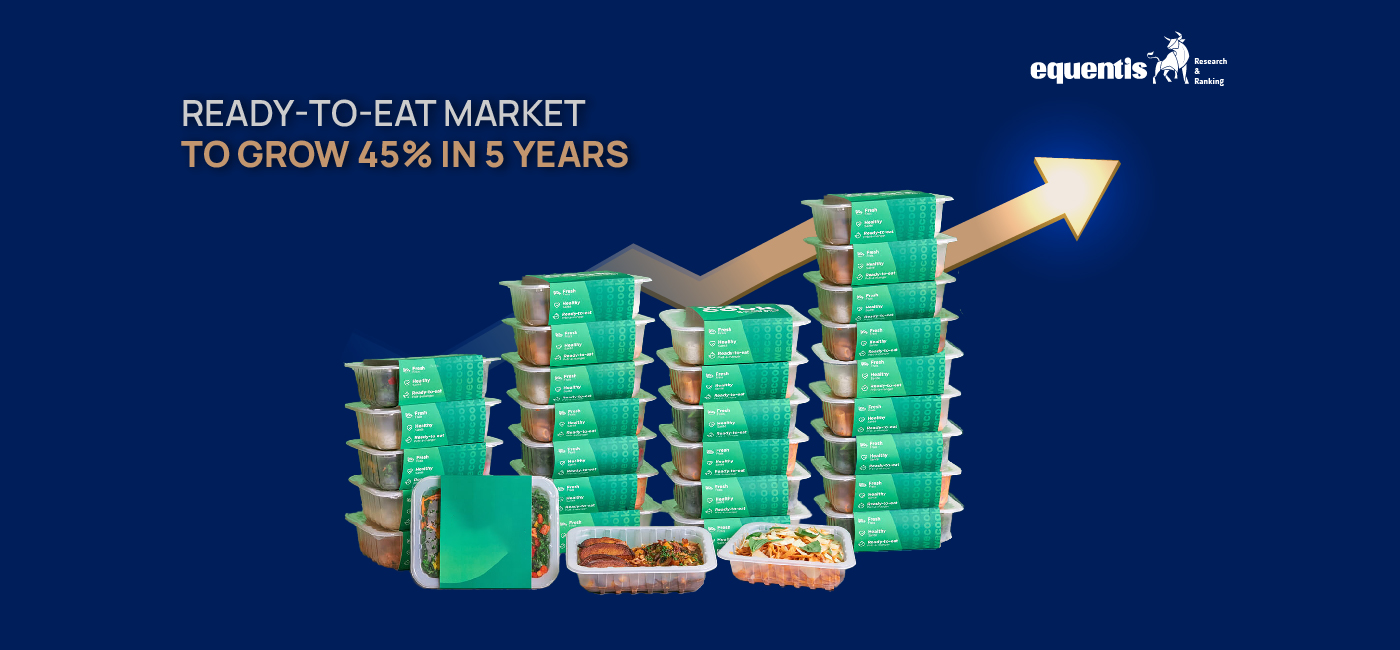Remember those evenings when cooking a meal feels like a massive task after a long day? We’ve all been there. Thankfully, there’s a growing solution: Ready to eat food packets. These convenient meals are becoming increasingly popular in India, and the market is poised for explosive growth.
A 45% Surge in 5 Years – Why the Rise?
The Indian ready-to-eat food packet market is expected to grow at a staggering 45% in the next five years. This surge can be attributed to several key factors. Firstly, there’s a rapid increase in travel, a growing younger generation, and a working population with busier lifestyles. Who has time to cook elaborate meals after a long commute or a demanding workday? Convenience is king, and ready-to-eat food packets provide a quick and easy solution.
Source: Statista
Beyond Convenience: Variety and Innovation
- The story doesn’t stop at convenience. The availability of diverse food options in RTE packets caters to the evolving palate of Indian consumers. From traditional Indian curries to international flavors, there’s something for everyone. Additionally, exposure to Western culture and a growing culinary adventure make RTE food a part of millennial life.
- Technology Plays Its Part
Technological advancements haven’t been left behind. Improved food packaging and cold chain logistics ensure Ready to eat food packets reach consumers fresh and safely. This robust infrastructure plays a crucial role in maintaining the quality and safety of these convenient meals.
- Working Families and Changing Demographics: Fueling the Demand
Working couples, parenting millennials, and the increasing number of young people living away from families are all contributing factors. Shorter commute times and job opportunities in different cities are pushing families apart, leading to a reliance on packaged and RTE food for daily meals.
- Beyond Convenience: A Focus on Innovation
Consumers today are increasingly health-conscious, but they also crave variety. In response, food manufacturers are constantly innovating and introducing new RTE options. Plant-based and millet-based RTE packets are gaining traction as consumers seek healthier alternatives. For instance, Wakao Foods uses the popular superfood jackfruit to create convenient plant-based meals.
- Government Initiatives: Promoting Healthier RTE Options
The Indian government is playing its part in ensuring the well-being of its citizens. The Production Linked Incentive (PLI) scheme encourages millets, a healthier grain option, in RTE food products. This initiative aims to promote healthier options within the RTE category.
- COVID-19 and the Rise of Convenience
While disruptive in many ways, the COVID-19 pandemic also fueled the growth of the RTE food packet market. The need for convenience during lockdowns and social distancing led to a surge in demand for FMCG goods, including RTE and frozen foods.
The Challenge: Health Concerns
However, this road to growth isn’t without obstacles. A major concern is the potential rise in obesity and diabetes due to the perception of RTE food being high in fat. Health-conscious consumers are wary of compromising their well-being for convenience.
Looking Ahead: The Future of Ready-to-Eat Food Packets
The Russia-Ukraine war and its impact on global food security create some uncertainties. However, the overall trend for RTE food packets in India remains positive. With a focus on convenience, innovation, and health-conscious options, the Indian RTE food packet market is well on its way to explosive growth in the coming years.
*Disclaimer Note: The securities quoted, if any, are for illustration only and are not recommendatory. This article is for education purposes only and shall not be considered as recommendation or investment advice by Research & Ranking. We will not be liable for any losses that may occur. Investment in securities market are subject to market risks. Read all the related documents carefully before investing. Registration granted by SEBI, membership of BASL, and certification from NISM in no way guarantee the performance of the intermediary or provide any assurance of returns to investors.
How useful was this post?
Click on a star to rate it!
Average rating 0 / 5. Vote count: 0
No votes so far! Be the first to rate this post.
I’m Archana R. Chettiar, an experienced content creator with
an affinity for writing on personal finance and other financial content. I
love to write on equity investing, retirement, managing money, and more.
-
Archana Chettiarhttps://www.equentis.com/blog/author/archana/
-
Archana Chettiarhttps://www.equentis.com/blog/author/archana/
-
Archana Chettiarhttps://www.equentis.com/blog/author/archana/
-
Archana Chettiarhttps://www.equentis.com/blog/author/archana/

